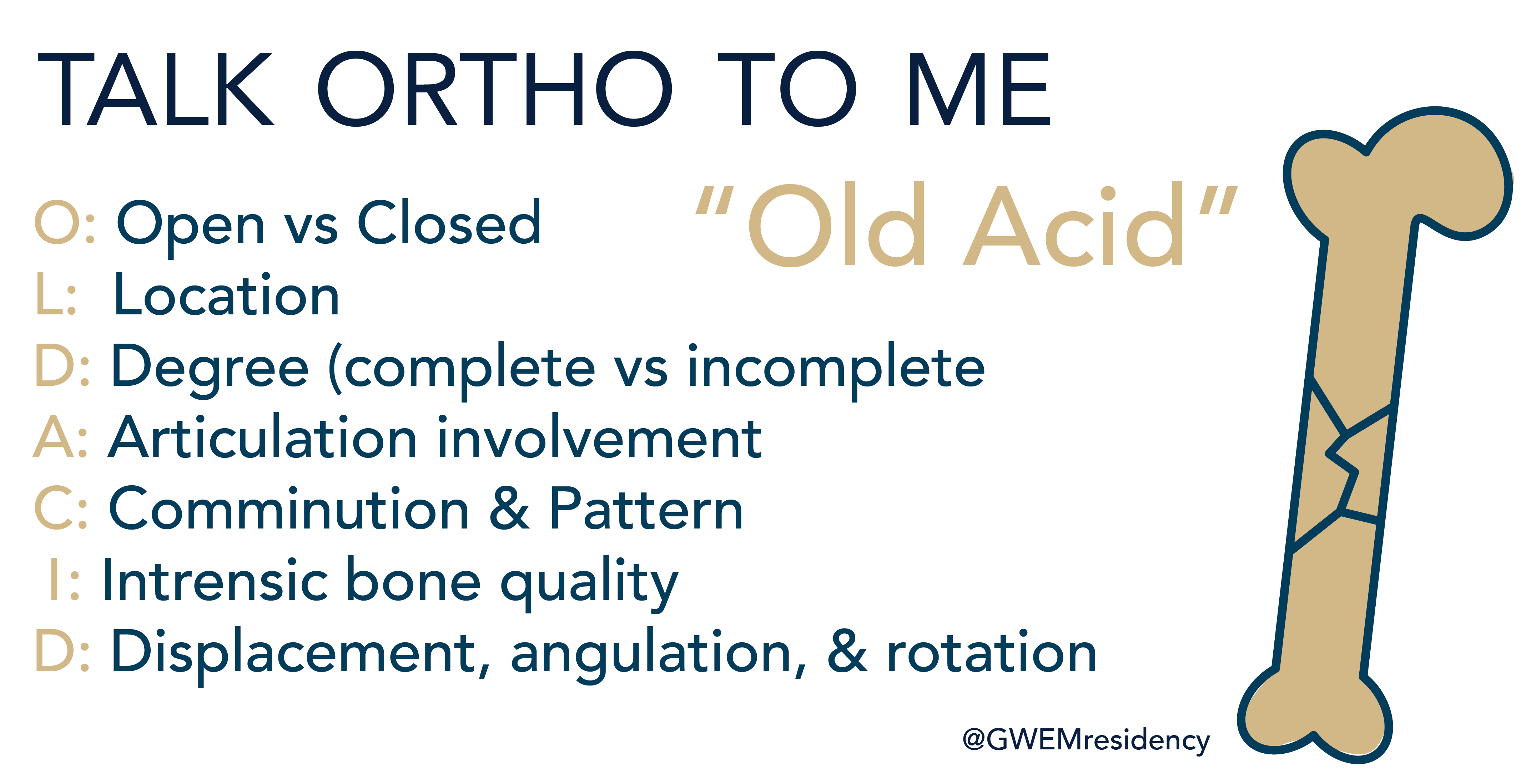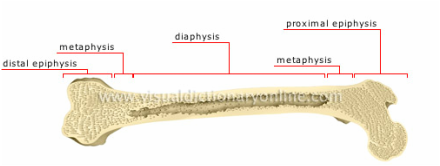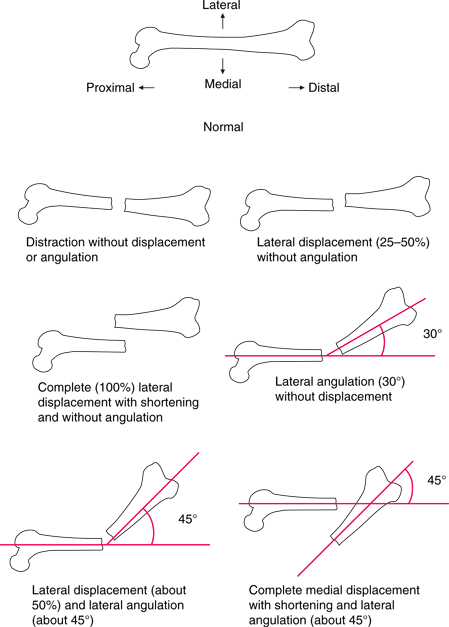|
When consulting for fracture care, it is important to provide an accurate description of findings over the phone. This is important to improve patient outcome, ensure consultants are well informed of the patient's condition, and to ensure appropriate documentation of a patient's injuries. Wet readEvery potential fracture site requires at least two views to fully evaluate for injury. You should also be imaging the joint above and below the injury as well. When reading your imaging, make sure you identify any joint involvement, and second fractures that may be present, as well as lines and tubes. Naming fracturesThe menemonic OLD ACID can be used to describe fractures
Specific consult questionWhen consulting, ensure you have a specific consult question, especially when a consultant may not be in the hospital or may not have access directly to imaging.
0 Comments
Leave a Reply. |
Categories
Archive
February 2018
Please read our Terms of Use.
|




